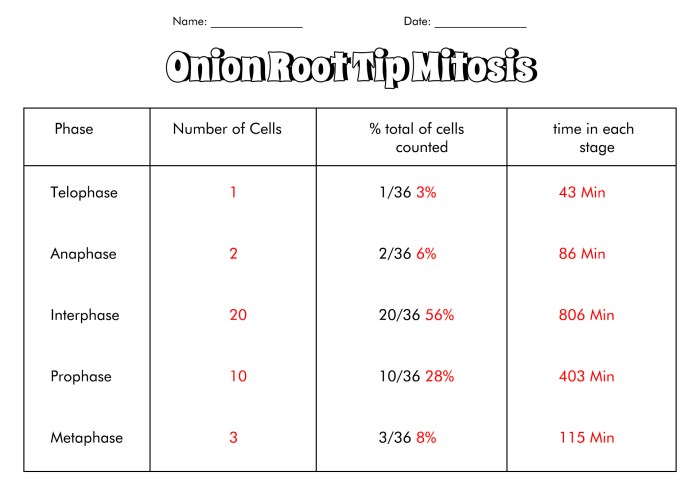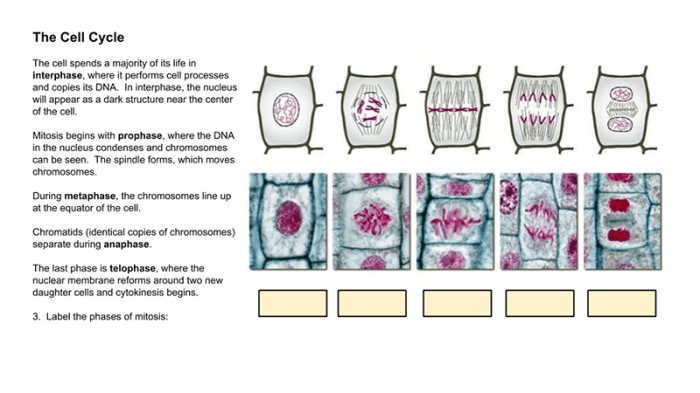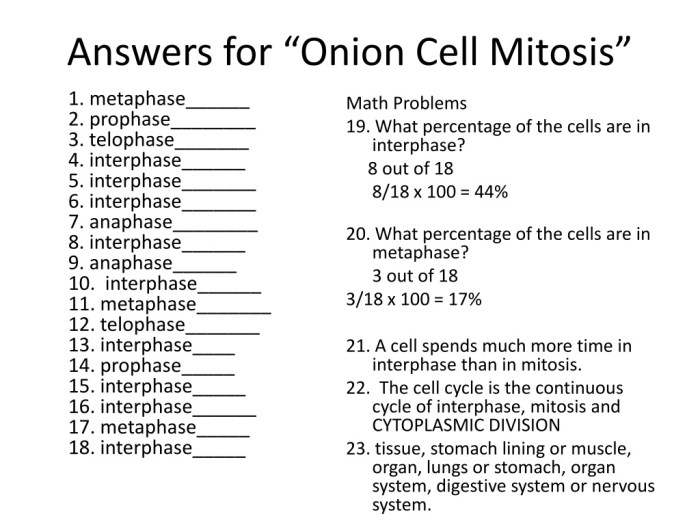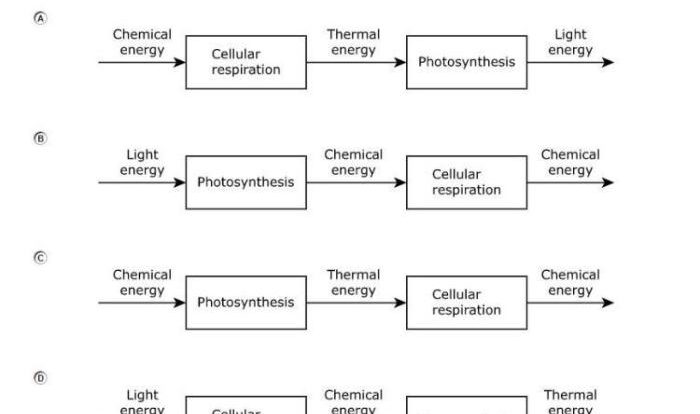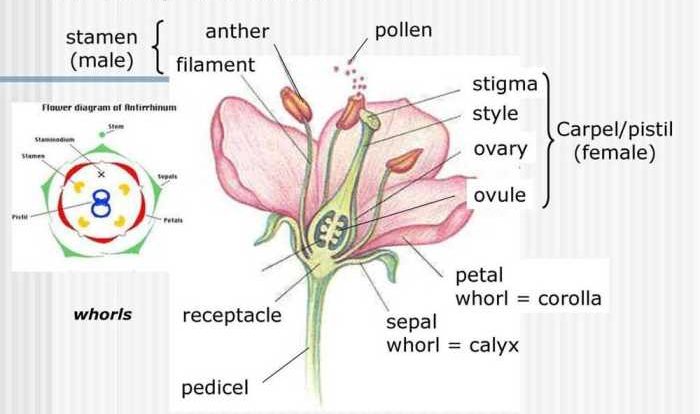Onion cell mitosis worksheet answers provide a valuable tool for educators and students alike, offering a comprehensive understanding of the fundamental process of cell division. By delving into the intricacies of onion cell mitosis, this worksheet empowers learners to unravel the mysteries of cellular reproduction, laying the foundation for a deeper understanding of biology.
This meticulously crafted worksheet guides users through the various stages of onion cell mitosis, from prophase to telophase, equipping them with a thorough grasp of the key events that orchestrate this critical biological process.
Onion Cell Mitosis: An Overview

Onion cell mitosis is the process of cell division that occurs in the root tip cells of onions. It is a fundamental process in biology, essential for growth, development, and repair in all living organisms.
Studying onion cell mitosis is crucial in biology education because it provides a simplified and accessible model for understanding the complex process of cell division. It allows students to observe and analyze the different stages of mitosis in a clear and visually appealing manner.
The stages of onion cell mitosis include:
- Prophase
- Metaphase
- Anaphase
- Telophase
Materials and Equipment
To observe onion cell mitosis, the following materials and equipment are required:
- Onion root tips
- Hydrochloric acid (HCl)
- Acetocarmine stain
- Microscope slides and coverslips
- Microscope
The purpose of each material/equipment is as follows:
- Onion root tips:Contain the cells undergoing mitosis.
- HCl:Softens the cell walls, making the chromosomes more visible.
- Acetocarmine stain:Stains the chromosomes, making them easier to observe under the microscope.
- Microscope slides and coverslips:Used to prepare the onion root tip cells for observation under the microscope.
- Microscope:Used to visualize the stained chromosomes and observe the stages of mitosis.
Procedure
To observe onion cell mitosis, follow these steps:
- Collect onion root tips:Cut approximately 1-2 cm of the root tips from an onion.
- Fix the root tips:Place the root tips in a small container containing HCl for 5-10 minutes to soften the cell walls.
- Rinse the root tips:After fixation, rinse the root tips thoroughly with water to remove any remaining HCl.
- Stain the root tips:Place the root tips in a drop of acetocarmine stain for 5-10 minutes to stain the chromosomes.
- Prepare the slides:Place a drop of the stained root tips onto a microscope slide and cover it with a coverslip.
- Observe under the microscope:Examine the slide under a microscope using the 40x objective lens.
- Identify the stages of mitosis:Observe the different stages of mitosis (prophase, metaphase, anaphase, telophase) by identifying the characteristic chromosome arrangements.
Safety precautions:
- Wear gloves when handling HCl.
- Avoid contact of HCl with skin and eyes.
- Dispose of HCl and acetocarmine stain properly according to local regulations.
Observations and Data Collection
During each stage of onion cell mitosis, key observations should be made:
- Prophase:Chromosomes become visible and condense.
- Metaphase:Chromosomes align at the equator of the cell.
- Anaphase:Sister chromatids separate and move to opposite poles of the cell.
- Telophase:Nuclear envelopes form around the daughter nuclei, and chromosomes become less visible.
The collected data can be recorded in a data table or chart, including the following information:
- Stage of mitosis
- Number of cells observed in each stage
- Description of the observed chromosome arrangements
Analysis and Interpretation, Onion cell mitosis worksheet answers
The collected data should be analyzed to identify the different stages of onion cell mitosis. The observed patterns and variations can provide insights into the dynamics of cell division.
Factors that may influence the rate and accuracy of mitosis in onion cells include:
- Temperature
- pH
- Nutrient availability
Educational Applications
The onion cell mitosis worksheet is a valuable educational tool for teaching students about cell division and mitosis.
The worksheet can be used to:
- Demonstrate the process of mitosis in a clear and engaging manner.
- Allow students to observe and analyze the different stages of mitosis firsthand.
- Reinforce the concepts of cell division and chromosome segregation.
The worksheet can be incorporated into lesson plans and activities, such as:
- Laboratory exercises
- Class discussions
- Homework assignments
Troubleshooting and Common Errors
Students may encounter errors or challenges while performing the onion cell mitosis worksheet. Common errors include:
- Difficulty identifying the stages of mitosis:Students may need guidance in distinguishing between the different stages based on chromosome arrangements.
- Overstaining or understaining:The staining time may need to be adjusted to achieve optimal visibility of chromosomes.
- Poor slide preparation:Air bubbles or uneven distribution of cells can affect observation.
Troubleshooting tips include:
- Provide clear instructions and guidance for each step.
- Use high-quality materials and equipment.
- Allow sufficient time for staining and observation.
- Encourage students to seek assistance if needed.
Additional Resources
- Phases of Mitosis | Khan Academy
- Onion Root Tip Mitosis | BioInteractive
- Mitosis and Meiosis Virtual Lab | Carolina Biological Supply Company
Essential Questionnaire: Onion Cell Mitosis Worksheet Answers
What is the significance of studying onion cell mitosis?
Studying onion cell mitosis is essential for understanding the fundamental process of cell division, which is crucial for growth, development, and tissue repair in all living organisms.
What are the key stages of onion cell mitosis?
The key stages of onion cell mitosis include prophase, metaphase, anaphase, and telophase, each characterized by distinct chromosomal arrangements and cellular events.
How can I use the onion cell mitosis worksheet in my classroom?
The onion cell mitosis worksheet can be incorporated into lesson plans and activities to engage students in hands-on exploration of cell division, reinforcing their understanding through observation and data analysis.
